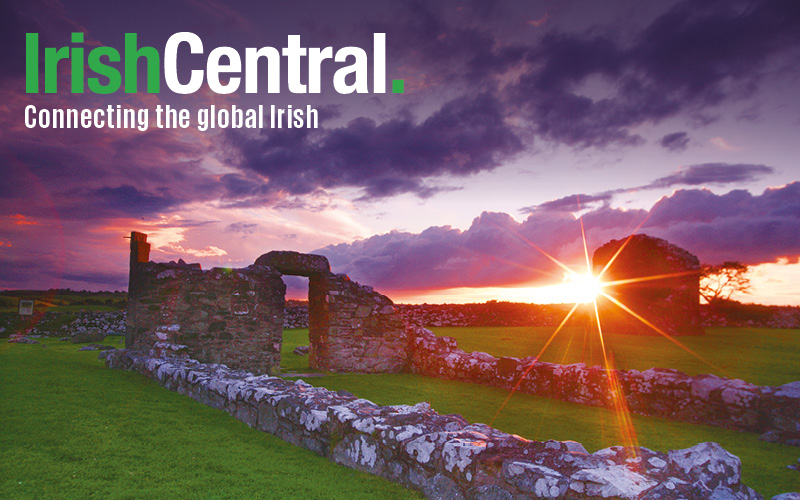Irish Great Hunger memorials to visit on National Famine Commemoration Day
Editor's note: Today, September 30, marks the 2017 National Famine Commemoration Day taking place in Co. Tipperary. This year held in the Famine Warhouse 1848, a national heritage site in Ballingarry, the Irish Taoiseach (Prime Minister) Leo Varadkar and Irish Minister for Culture, Heritage, and the Gaeltacht Heather Humphreys will officiate over the event.
“The Ballingarry Famine Warhouse is a fitting and historic venue for this year's commemoration and I look forward to working with the local community and our colleagues in Tipperary Co. Council in preparing for this solemn commemorative event," said Minister Humphreys at the launch of the National Famine Commemoration in April 2017.
"The Ballingarry 1848 Historical Society has held the annual Famine 1848 Walk for the last decade, which shows the commitment of the local community to remember An Gorta Mór and its victims. “Sadly, the plight of hunger still stalks the world today. Our commemoration of the sufferings of our own past can only strengthen and increase our sense of empathy and understand with those societies afflicted by this scourge in our own era.”
In honor of National Famine Commemoration Day, below is a collection of the many wonderful tributes and memorials to the Irish Great Hunger victims to be found in Ireland and around the world. Let us know how you are remembering the day and commemorating the plight of the famine Irish.
Read more: Ireland should have a national day of commemoration for the Great Hunger
Irish Famine memorials in Ireland
Between 1845 and 1852 approximately one million Irish people died of starvation and disease another 1.2 million fled in search of a better life. The tragic period of the Great Hunger in Ireland will forever be remembered by the Irish people and diaspora around the world as a grief-stricken time of intense loss.
Here are some of the moving monuments erected to honor those who left Ireland forever or died during this sad chapter in Ireland’s history.
Strokestown Park Famine Museum

Strokestown Park Famine Museum. Image: Tourism Ireland.
A former big house estate, currently home to Ireland's National Famine Museum.
Customs House Quay, Dublin

Custom House Quay. Image: Tourism Ireland.
Painfully thin sculptural figures, by artist Rowan Gillespie, stand as if walking towards the emigration ships on the Dublin Quayside.
St Stephen's Green, Dublin

St Stephen's Green famine memorial. Image: Tourism Ireland.
"Famine", a sculpture by Edward Delaney.
Limerick, The "Broken Heart" Famine memorial by Maria Pizzuti, Lower Mallow Street
Also in Limerick city, the Pauper's Graveyard (now known as St Brigid's cemetery) in Killeely. Here a large timber cross was erected on the site of this mass graveyard. There are no headstones.
Famine Ship at Murrisk, County Mayo

National Famine Memorial. Image credit: Tourism Ireland.
This sculpture of a famine ship, near the foot of Croagh Patrick, depicts the refugees it carries as dead souls hanging from the sides.
This stark and striking monument in Murrisk is an appropriate commemoration of the millions who perished in the Great Famine over one hundred and fifty years ago. Crafted in bronze by John Behan, the dramatic sculpture depicts a "Coffin Ship" with skeleton bodies in the rigging.
"Coffin Ship" was the term used to describe the ships which left our shores horrendously overcrowded with emigrants fleeing the famine. The dire and unhygienic conditions on board ensured that many did not reach their destination.
The National Famine Monument was unveiled in 1997 by President Mary Robinson. Located directly opposite the carpark at the foot of Croagh Patrick, it commands panoramic views over the drumlin landscape of Clew Bay.
Clones, County Monaghan Famine Graveyard
Clones hosted the National Famine Commemoration for 2011 with President Mary McAleese and other representatives from 30 Countries also taking part.
Donaghmore Famine Museum

The restored Donaghmore famine workhouse.
Set in Donaghmore Workhouse in County Laois.
Doolough Tragedy, County Mayo

Doolough - National Famine Commemoration. Image credit: Tourism Ireland.
A memorial commemorates famine victims who walked from Louisburgh along the mountain road to Delphi Lodge to seek relief from the Poor Board who were meeting there. Returning after their request was refused, many of them died at this point. This became known as the Doolough Tragedy.
Doagh Island, Inishowen, County Donegal

Doagh Famine Village - National Famine Commemoration. Image credit: Tourism Ireland.
Doagh Visitor Centre and Famine Museum and the village has exhibits and memorial on the effects of the famine in Inishowen, Donegal.
Ennistymon, County Clare

Ennistymon - National Famine Commemoration. Image credit: Tourism Ireland.
This was the first memorial in Ireland to honor those who suffered and were lost during the Great Famine. It is erected across the road from Ennistymon Hospital, built on the grounds of the local workhouse where an estimated 20,000 Irish died and a mass graveyard for children who perished and were buried without coffins.
County Sligo

Sligo famine memorial - National Famine Commemoration. Image credit: Tourism Ireland.
Sligo has three memorial sculptures erected by the Sligo Famine Commemoration Committee. One is at the quayside, of a family comforting each other, where 30,000 people emigrated between 1847 and 1851. The other two are the gates of a famine graveyard and of a tree (called Faoin Sceach) in the grounds of the graveyard, where approximately 2,000 famine victims are buried.
Newcastle West, County Limerick
The Famine Graveyard is at the rear of modern-day St. Ita's Hospital. Hundreds of people who died during the famine are buried there in unmarked graves. The cemetery is marked by a plain old cross. Close by stands the Workhouse.
The MacDonagh Junction complex in Kilkenny, the site of an old famine workhouse.
The memorial is marked by a small garden, where many bodies were found during an excavation, and the walls of the workhouse are incorporated into the shopping complex.
Ballingarry Famine Warhouse 1848
Widow McCormack's house, the site of the 1848 rebellion, has now been converted into a museum.
Thurles Famine Museum occupies St. Mary's church in Thurles
St. Mary's church is built on the site of another pre-reformation church dating to the 12th century. This site includes both war and Irish Famine memorials.
How will you be remembering the Irish National Famine Commemoration Day 2017? Do you know of another memorial to the Great Hunger in Ireland or an important historical site from the famine? Let us know in the comment section.
* Originally published in 2014.




Comments